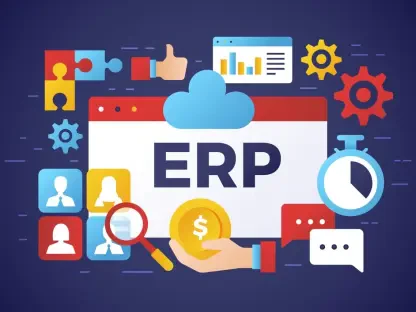In an era where digital platforms shape business success, YouTube stands out as a transformative tool for SaaS companies aiming to expand their reach and influence, offering a unique space where users actively seek solutions to specific problems. With over 3 billion monthly searches, it ranks as the second-largest search engine behind Google, providing an unparalleled opportunity for SaaS brands to connect with high-intent prospects who are often just steps away from a purchase decision. Unlike traditional marketing channels like paid ads or email campaigns, YouTube allows these companies to showcase complex software through engaging video content, such as tutorials and demos, which often communicate value more effectively than text-heavy explanations. This dynamic platform not only boosts visibility but also builds trust by positioning brands as authoritative voices in their niche. As more SaaS businesses recognize this potential, those who master strategic video content are gaining a competitive edge, turning casual viewers into loyal customers through education and engagement.
1. Understanding the Power of YouTube for SaaS Expansion
YouTube’s significance for SaaS growth lies in its ability to capture users at critical decision-making moments. When individuals search for terms like “how to manage projects efficiently” or “best tools for SEO tracking,” they are not merely browsing but actively seeking actionable solutions. This high level of intent makes them prime candidates for conversion, far more so than audiences on other social platforms where casual scrolling dominates. Google’s data further supports this, revealing that 90% of users discover new brands or products on YouTube, while 68% rely on videos to guide their purchasing choices. For SaaS companies, this translates into a direct line to potential customers who are already primed to explore tools that address their needs. By meeting these users where they are searching, brands can establish a foothold in their decision-making process early on.
Beyond user intent, YouTube offers a unique format to tackle one of the biggest challenges for SaaS providers: explaining intricate software functionalities. A concise two-minute screen recording or demo can illustrate a product’s capabilities far more clearly than a detailed webpage or feature list ever could. This visual approach not only simplifies complex ideas but also builds confidence in the software’s value. As video content continues to dominate online engagement, SaaS brands that leverage this medium effectively can cut through the noise of traditional marketing, delivering messages that resonate deeply with their target audience and drive meaningful interactions.
2. Crafting Educational Content as a Core Strategy
One of the most effective approaches SaaS brands adopt on YouTube is prioritizing educational content over overt sales pitches. By focusing on tutorials, how-to guides, and product walkthroughs, companies address real pain points for their audience, building trust before asking for a commitment. For instance, a leading CRM provider has gained traction by producing a “Marketing 101” series that teaches fundamental concepts like lead generation and conversion optimization. These videos rank highly for broad industry terms, establishing the brand as a thought leader while subtly introducing its tools. Formats such as step-by-step product guides, niche-specific tutorials, industry best practices, and solutions to common issues prove particularly impactful in this space.
This strategy of teaching first and selling second pays dividends in establishing long-term authority. When viewers gain valuable insights or skills from a brand’s content, they naturally associate that expertise with the company’s offerings. Additionally, repurposing longer webinar sessions into bite-sized clips for YouTube and other platforms maximizes reach without requiring extensive new production. This approach not only enhances visibility but also ensures that the content remains relevant across multiple touchpoints, reinforcing the brand’s presence in the minds of potential customers who are navigating their purchase journey.
3. Humanizing Brands through Storytelling and Personality
SaaS products often risk appearing abstract or impersonal, but YouTube provides a platform to change that narrative by showcasing the people behind the software and the tangible impact on users. Highlighting customer success stories or behind-the-scenes glimpses of a company’s internal use of its tools can transform a faceless product into a relatable solution. A notable productivity software brand excels in this area by featuring real users explaining how the tool streamlines their workflows, alongside content that reveals how its own team relies on the product. This dual focus creates an emotional connection that static marketing materials struggle to achieve.
Such storytelling serves a dual purpose: it provides social proof while demonstrating practical applications of the software. Instead of merely listing features, these videos show how those features address specific challenges for real individuals or businesses. This approach resonates with viewers who see themselves in these stories, making the product feel indispensable rather than optional. By weaving narratives that highlight both the human element and the utility of their offerings, SaaS brands can foster a deeper sense of loyalty and trust, paving the way for stronger customer relationships over time.
4. Building Engaged Communities via Interactive Features
YouTube’s built-in comment systems and community tools offer SaaS brands a powerful avenue for fostering ongoing relationships with potential and existing customers. Engaging directly with viewers through regular Q&A sessions, where common industry questions or customer concerns are addressed, positions a brand as approachable and knowledgeable. Live streams and webinars, facilitated by platforms like StreamYard for professional delivery, further amplify this interaction by allowing real-time dialogue. Some companies extend this engagement by creating paid communities on external platforms, offering exclusive content and direct support to deepen connections.
This focus on community building transforms passive viewers into active participants who feel invested in the brand’s ecosystem. By consistently providing personalized advice and addressing specific queries, SaaS companies can cultivate trust that translates into long-term loyalty. Exploring additional tools that offer discounted rates on streaming, editing, and analytics can also help scale content production efficiently. This strategic use of YouTube’s interactive features not only enhances audience engagement but also creates a feedback loop that informs future content, ensuring it remains aligned with user needs and preferences.
5. Maximizing Visibility with SEO and Discoverability Tactics
A significant advantage of YouTube for SaaS brands is the potential for videos to rank in both YouTube and Google search results, effectively doubling exposure for targeted keywords. A well-known SEO tool provider exemplifies this by consistently ranking for terms like “how to do keyword research” across both platforms, capturing audiences wherever they search. The key lies in identifying and targeting specific search terms that align with the queries of ideal customers. Utilizing YouTube’s autocomplete feature or keyword research tools can uncover these opportunities, enabling brands to create content that directly addresses user intent.
Optimizing video elements such as titles, descriptions, thumbnails, and tags further enhances discoverability, ensuring content reaches the right audience. Detailed descriptions with relevant keywords and compelling thumbnails that clearly indicate the video’s topic can significantly boost click-through rates. Additionally, using end screens to promote related content keeps viewers engaged with the channel longer, increasing the likelihood of conversion. This dual focus on SEO and strategic optimization allows SaaS brands to attract organic traffic consistently, establishing a sustainable pipeline of leads without heavy reliance on paid advertising.
6. Driving Conversions with Targeted Video Content
While educational content builds trust, SaaS brands must also create videos specifically designed to drive conversions among high-intent viewers. Product comparison videos are particularly effective, capturing searches like “[competitor] vs [your tool]” by offering honest evaluations of features and use cases. Employing AI tools to analyze competitor strengths and weaknesses can refine these comparisons, ensuring they resonate with viewers. Additionally, strategically placed calls-to-action in videos that highlight testable features can guide viewers toward free trials or demos, capitalizing on their immediate interest.
This conversion-oriented approach targets users who are already considering solutions within the brand’s category, making them more likely to take action. Addressing subscription churn through thoughtful retention strategies is equally critical, as maintaining a customer base is as important as acquiring new users. By balancing educational value with direct conversion tactics, SaaS companies can create a seamless funnel on YouTube that nurtures prospects from awareness to decision, ultimately translating views into measurable business growth.
7. Learning from Leading SaaS YouTube Channels
Examining successful SaaS YouTube channels reveals actionable insights for aspiring brands. One CRM giant has amassed significant traffic by adopting a learning-first approach, creating playlists on SEO and sales strategies that garner millions of views without heavy product promotion. These efforts drive substantial website visits and sign-ups as viewers engage with free tools or paid plans after consuming the content. Similarly, a productivity software company focuses on community-driven videos, showcasing authentic user stories and practical templates that viewers can replicate, enhancing perceived value.
Another SEO tool provider integrates educational content with subtle product placement, teaching industry skills while demonstrating how its features apply to those lessons. This dual-purpose content ranks for numerous keywords, funneling trial sign-ups from engaged learners. These examples underscore the importance of prioritizing audience needs—whether through broad education, relatable storytelling, or actionable tutorials—over aggressive sales tactics. By studying these approaches, SaaS brands can identify strategies that align with their unique offerings and audience expectations.
8. Implementing Best Practices for YouTube Success
To maximize YouTube’s potential, SaaS brands should adhere to proven best practices, starting with delivering value before promotion. The 80/20 rule—where 80% of content educates and only 20% promotes—builds trust and receptivity among viewers. Consistency in publishing, whether weekly or bi-weekly, supported by a content calendar planned a month ahead, ensures a steady flow of material that keeps audiences engaged. High-quality production, focusing on clear audio, good lighting, and stable visuals using tools like Loom, is also non-negotiable to maintain viewer retention.
Optimization for discovery is another critical pillar, involving keyword-rich titles, detailed descriptions, and eye-catching thumbnails to boost search rankings and clicks. Tracking meaningful metrics such as watch time, click-through rates, website traffic, and conversion rates provides insights into business impact beyond superficial views. These practices collectively create a robust foundation for a YouTube presence that not only attracts viewers but also converts them into customers, establishing a channel as a reliable growth engine for the brand.
9. Taking Initial Steps to Launch a SaaS YouTube Presence
Getting started on YouTube for SaaS growth involves a straightforward, actionable process. Begin by identifying a specific pain point that resonates with the target audience, ensuring the focus is narrow and relevant. Next, produce a concise five-minute video that demonstrates a solution to this issue, avoiding product mentions unless directly tied to the resolution. This initial content should prioritize value, setting a tone of helpfulness that defines the channel’s identity from the outset.
Once created, upload the video with a carefully crafted title and description optimized for relevant keywords to enhance visibility. Commit to a consistent posting schedule of one video per week for at least three months, allowing time to gather audience feedback and performance data. By the fourth month, analyze these insights to refine the content strategy, identifying what resonates most and adjusting accordingly. This structured approach ensures a gradual build-up of momentum, creating a sustainable channel that grows in influence and impact over time.
10. Anticipating Emerging Trends in SaaS YouTube Marketing
Looking ahead, several trends are shaping how SaaS brands can leverage YouTube for future growth. The rise of short-form content, particularly through YouTube Shorts, offers a way to deliver quick tips and feature highlights tailored for mobile-first audiences, capturing attention in under 60 seconds. Additionally, advancements in YouTube’s recommendation algorithms, driven by AI, are improving content matching to viewer interests, meaning niche SaaS videos have a better chance of reaching qualified prospects when tailored to specific segments.
Partnering with industry influencers for co-created content is another growing avenue, providing access to established audiences and enhancing credibility. Tools that facilitate referral and affiliate programs can streamline these collaborations, rewarding partners for conversions. By staying ahead of these developments—whether through adopting short-form formats, leveraging AI-driven targeting, or building strategic partnerships—SaaS brands can position themselves to capitalize on evolving viewer behaviors and platform capabilities, ensuring long-term relevance.
11. Reflecting on YouTube’s Transformative Impact for SaaS
Looking back, YouTube emerged as a game-changer for SaaS brands seeking to carve out a space in competitive markets. While many competitors clung to paid advertising and cold outreach tactics, the smartest players turned to this platform to cultivate organic traffic and forge genuine trust with their audiences. Success stemmed not just from superior content but from a commitment to teaching valuable skills, addressing real challenges, and nurturing meaningful connections with viewers.
The path forward was clear for those who capitalized on these insights. Starting with a single video that tackled a specific customer need proved to be a pivotal first step, followed by a dedication to consistent publishing. This approach laid the groundwork for a growth channel that gained strength over time. For SaaS companies ready to take action, the focus shifted to planning a targeted video series that aligned with audience searches, ensuring that future customers found the solutions they sought right where they were looking.









